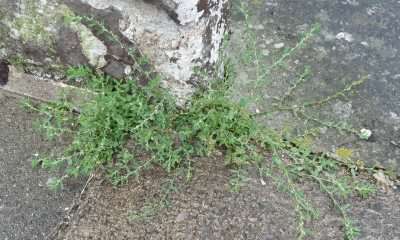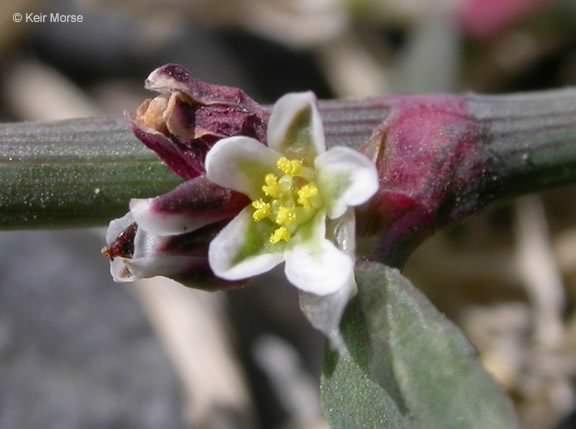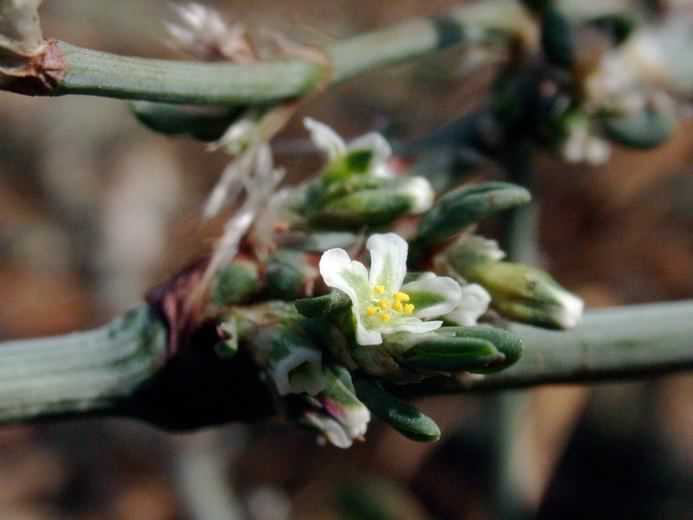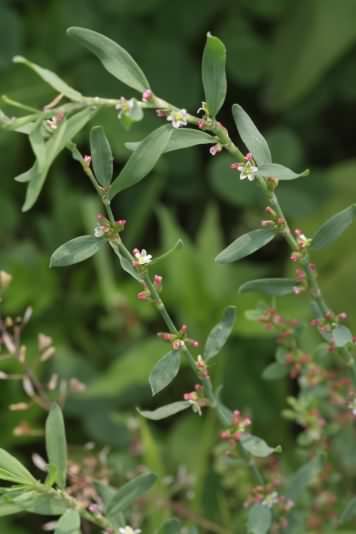
Photo ©2015 Phil Pullen

Photo ©2008 Keir Morse

Photo ©2006 Steven Thorsted

Photo ©2009 Dalgial
Click any photo for a larger image
Common Knotgrass - Polygonum aviculare
Family - Polygonaceae
Also known as - Prostrate Knotweed, Lowgrass, Cowgrass
Knotgrass is a widespread straggling annual plant found in roadsides, arable fields, seashore, on waste ground, and gardens in the UK, Europe, North America and Eurasia. It grows to 10–40cm (4–16in) high with long hairless elliptical leaves with a rounded tip 2.5–5cm (1–2in) long on short stalks from stout stems with swollen joints.
Self pollinating pale pink or white five petaled flowers 3.5–5mm (0.14–0.2in.) wide in small clusters are seen from May to October originating from the leaf axils, the flowers are pink whilst still forming. Flowers mature to a dark brown, three–edged nut and needing light to germinate they may appear to suddenly grow where they have not been before once the soil has been disturbed. Some variation within populations with several different sub–species is recognized, related to Buckwheat and Docks.
BCP do not advise or recommend that Knotgrass – Polygonum aviculare is eaten or used as an herbal remedy. Apparently use as a herbal medicine with astringent properties with an infusion useful in diarrhoea and haemorrhages. A decoction was used to kill worms, or an ointment as a remedy for sores.
 Photo ©2015 Phil Pullen |
 Photo ©2008 Keir Morse |
 Photo ©2006 Steven Thorsted |
 Photo ©2009 Dalgial |
Click any photo for a larger image | |||
Site design ©1999– Brickfields Country Park - Privacy -